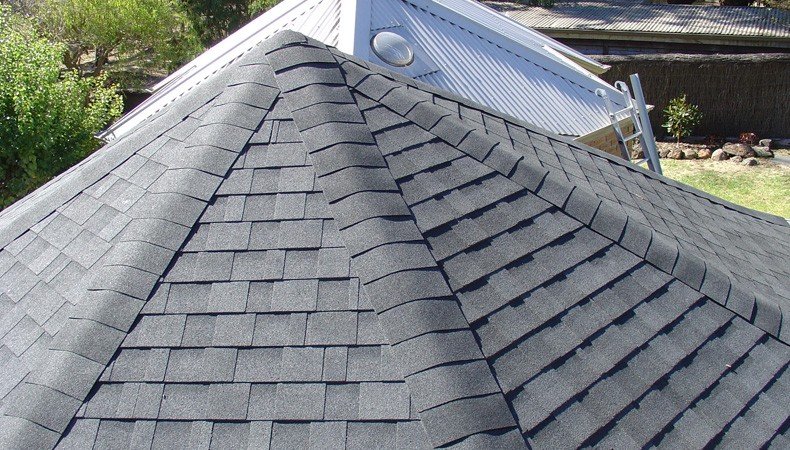The most common roofing material used in the United States today is asphalt shingles. The primary reason is that they are so affordable. Asphalt shingles are an inexpensive and charming way to update your home with a myriad of styles and colors. However, some say traditional shingles are dull and boring, causing every house on the block to look similar. Thanks to dimensional shingles, those criticisms are a thing of the past!
What Are Dimensional Shingles?
Before dimensional shingles came on to the scene, 3-tab shingles were the most often used in roof replacement. They were created in the 1970s from organic materials and fiberglass mixed with asphalt. Oftentimes, they have other added minerals to make them even more durable against the elements. Traditional shingles have no depth and look flat leading roofers to layering them up in ways to add dimension. This is what initiated the original idea of dimensional shingles.
Dimensional shingles are also known as laminated or architectural shingles. They are like traditional asphalt shingles with one key difference. Their depth, thickness, and layered appearance make them resemble wood shakes or slate tiles. Regular asphalt shingles give the roof a very bland presentation, whereas dimensional shingles have two layers bonded together adding dimension. In addition, random notches have been removed exposing the layer underneath. This gives these shingles a three-dimensional display with contrasting low and high tabs.
What Are Designer Shingles?
Some dimensional shingle manufacturers have taken the concept much further to create a wide collection of styles. These range from rugged and dramatic to the old world and Victorian styles. Designer shingles have additional layers of asphalt and are often cut, colored, or ornately shaped to be extremely decorative. You will often find them described using other roofing terms such as tile, shake, and slate. This is because manufacturers have shaped them in a way to emulate other more expensive roofing types. An array of terms is used to describe designer shingles in the roofing industry like architectural, high-definition, premium, and ultra-premium.
Cost of Dimensional Shingles
Dimensional shingles on average cost about 20 percent more than traditional shingles ranging from $3 to $5 per square foot. Designer shingles are a bit higher at about $4 to $6 per square foot. This price does not include removing the old roof which should be brought into consideration. It is best to call a few reputable companies to accurately estimate the cost of dimensional shingles in your area.
Performance of Dimensional Shingles
Dimensional shingles are generally tougher than traditional 3-tab shingles and actually offer more protection from wind, rain, and hail. In addition, dimensional shingles of the highest grades can withstand 130 mph winds. Their lifespan is also much longer at 40 years instead of 20 years for single layer shingles. Therefore, most roofing companies will warranty them for longer periods of time due to their more robust nature.
Benefits of Dimensional Shingles
Dimensional shingles have many benefits over traditional asphalt shingles. These pros include:
- Stronger and more durable than traditional shingles.
- Provide a multi-dimensional appearance and texture.
- More attractive with tons of options and colors on the market, giving your roof a one of a kind look.
- Viewed as more aesthetically pleasing in fact, many neighborhoods may even require them.
- Longer lifespan making 40-50 year warranties common.
- Heavier construction makes them less likely to warp.
- Much better at covering up structural imperfections in the roof.
- Due to massive popularity, they are readily available.
- Works on most roof pitches and types just like regular asphalt shingles, dimensional shingles can be used almost anywhere.
Drawbacks of Dimensional Shingles
Despite the many advantages dimensional shingles do come with some negatives. These cons include:
- Higher upfront costs for dimensional asphalt shingles than you would pay for traditional asphalt shingles.
- More expensive as the double layer adds 20% to the average overall cost of installation.
- Due to the notches they May be more susceptible to algae and mildew. Organic material in shingles is one of mold’s favorite foods, making all asphalt shingles susceptible to mold and mildew.
Interested in dimensional or designer shingles? Be sure to give us a call. Our experts are here to help you decide which shingles fit your budget and needs. Call today to get your estimate!


